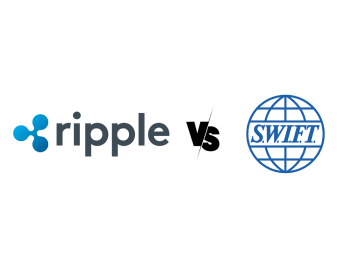In the ever-evolving world of cross-border payments, two prominent players, Ripple and SWIFT, are reshaping the way financial institutions transact globally. While both aim to facilitate secure and efficient international transfers, their approaches and technologies differ significantly.
SWIFT: Traditional Backbone of Global Banking
SWIFT, or the Society for Worldwide Interbank Financial Telecommunication, has served as the foundation for interbank communication since its establishment in the 1970s. It operates as a special messaging system for banks, efficiently facilitating the exchange of vital financial information.
When a bank needs to send money or important financial details to another, they rely on SWIFT—a process similar to sending a detailed letter outlining the transfer. This standardized messaging system enables banks worldwide to communicate swiftly, accurately, and securely.
The SWIFT network depends on a series of banks to settle transactions that are processed sequentially through various intermediary banks. Although this traditional approach is robust, it can result in delays and increased costs for cross-border transactions.
SWIFT’s enduring strength relies in its widespread adoption and standardization within the traditional banking sector. However, it’s crucial to note, that it does not integrate blockchain or digital assets into its core architecture. Instead, it functions much like a reliable post office for banks, ensuring the secure exchange of critical messages about money.
Ripple: A Digital Approach to Cross-Border Payments
Ripple is a fintech company that started in 2012, it has a different way of handling cross-border payments. Ripple use blockchain technology and their own digital money called XRP to make international transactions faster, cheaper, and more transparent.
At the core of Ripple’s innovative solution is a special network called RippleNet that links various financial institutions, such as banks and payment service providers, enabling them to engage in direct transactions.
The unique aspect lies in the use of XRP, Ripple’s native digital asset, as a bridge currency. XRP facilitates real-time, on-demand liquidity, significantly reducing the need for multiple intermediaries and streamlining the settlement process. This approach sets Ripple apart by utilizing blockchain technology and XRP to enhance the efficiency and effectiveness of cross-border transactions.
Key Differences between SWIFT and Ripple:
- Technology Infrastructure:
- SWIFT relies on a centralized messaging system without leveraging blockchain technology.
- Ripple utilizes a decentralized blockchain protocol, providing a transparent and secure ledger for transactions.
- Settlement Mechanism:
- SWIFT transactions involve a sequential process through correspondent banks, leading to potential delays.
- RippleNet’s use of XRP as a bridge currency enables direct and instant settlement between participating institutions.
- Speed and Cost-Efficiency:
- SWIFT transactions may take time and can incur higher costs due to multiple intermediaries.
- Ripple aims for real-time settlements, reducing transaction times and costs, especially when utilizing XRP.
In conclusion, while SWIFT remains a cornerstone in traditional banking communications, Ripple stands out as a fintech disruptor, introducing blockchain and digital assets to revolutionize cross-border payments. The choice between these two approaches often depends on the priorities and preferences of financial institutions, considering factors such as speed, cost, and the evolving landscape of global finance. As technology continues to advance, the cross-border payments sector is witnessing a transformative shift, with Ripple leading the charge toward a more decentralized and digital future.

